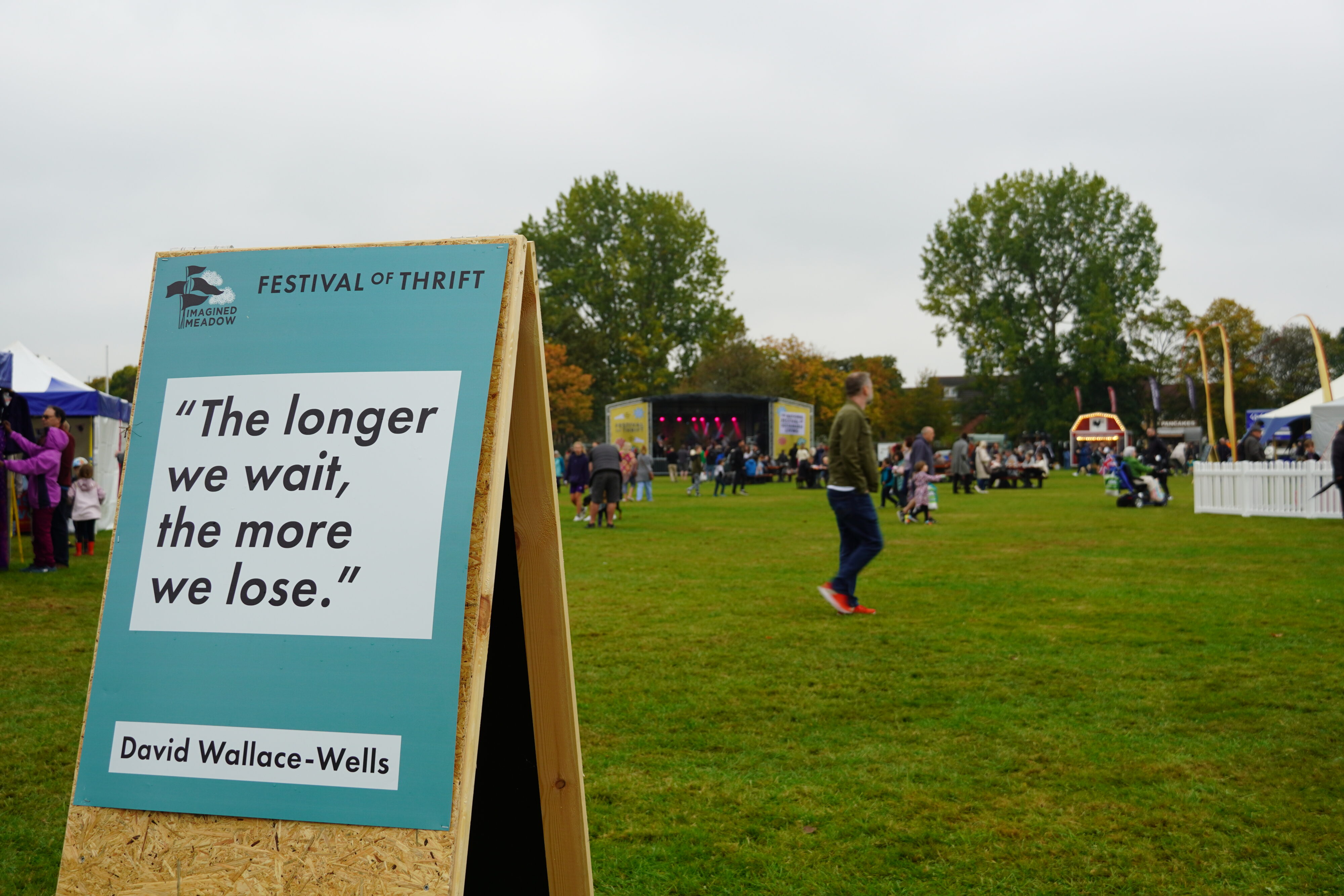
Danny Nicholson

Danny Nicholson
Each year in England an estimated 300,000 tons of old clothes are thrown away. That amount of discarded articles is worth an estimated £140 million and is almost the equivalent of throwing away the weight of more than 142 London Eyes each year. Less than one-fifth of all clothes in England are recycled with the remainder going to landfills overseas.
Meanwhile, in County Cleveland in Teesside, Northern England, one-third of families re-wear dirty clothes and one-quarter are in hygiene poverty, however many feel they are priced out of buying the newest fashion trends or new clothes in general.

Enter the Festival of Thrift, an annual celebration of sustainable living that is looking to make a change in the fashion industry and help aid residents in Teesside while also aiming to make an impact on a global scale. Every September, the Festival of Thrift erects dozens of stalls for local second-hand clothes sellers and artisans to offer items for sale, in a new chosen location across Teesside and Cleveland.
While the festival provides an opportunity for selling and recycling clothes, Co-Creative Director at Festival Of Thrift, Tanya Steinhauser sees the festival as a chance to educate and inspire those attending. “The idea of the festival is to showcase a really diverse and vibrant program that’s filled with hands-on workshops and innovative performances, interactive installations and provoking talks. Everything revolves around sustainability in the smallest and widest senses,” she said.
In its 12-year lifetime, the festival has grown year-on-year. This has meant that Steinhauser and her team have had to find creative ways to engage the festival goers as well as make good use of the site. This year’s event hosted various workshops on how to plant, grow, and harvest your own food. Just a 20 yard walk around the ground would show you the ins-and-outs of repurposing old, ripped jeans, as well as workshops in ancient Japanese mending skills to bring broken household items back to life.
Being an epicentre of all things sustainability with so much on offer I asked Stienhauser to pick one must-visit for future festivals. “I am quite excited about the Future Foods activity area,” she said. “I’m really into growing and cooking from scratch and these workshops on kind of fermenting things, because obviously food waste and kind of methane waste from food waste is a big issue as well. So just teaching people hacks again around how to turn something that might be going off in your fridge to something that you can put in a jar and eat in a couple of months. but the future food area is kind of, there’s a mural that and I’m quite excited about that.”

Fast fashion is on the rise, but many don’t know what it is and whether they are endorsing it. In short, fast fashion is all about making clothes quickly and cheaply, usually copying the latest trends. The idea is to get people to buy a lot of new clothes frequently because it’s affordable. But these clothes often don’t last long, and the process can harm the environment and exploit workers. It’s about quantity over quality, leading to a throwaway culture where people buy, wear, and toss things at a rapid pace.
Throw-away culture is taking the hot seat right now, from 2000 to 2015 the rates of clothing sales has more than doubled, while the general usage of clothes decreased.
But according to Steinhauser this quickening pace of buying, wearing, and discarding is unsustainable. “So we really like a slogan, ‘decades, not seasons,’” she said. Steinhauser recommended thinking long term about your wardrobe, investing in higher priced items of higher quality.
Nicer clothes tend to last longer, ultimately cutting down the cost in the long run and mitigating the environmental effects of fast fashion. “The materials used are a really important thing to consider. Buying clothes made of natural materials like hemp and staying away from stuff like latex and polyester makes a huge difference,” she said.
“Repairing and renting, even sharing or swapping clothes are all good options,” Steinhauser said.
With fashion so readily available, us consumers have also had a change of mindset on how we buy and use our fashion and for some possibly sleepwalk into the fast fashion culture. Steinhauser believes it is also down to us to be proactive and change the way we think about how we buy and consume fashion: “The modern world has given so many kind of other options that just make us not really rethink what we’re doing and that there are alternatives that actually, help us, live towards a more hopeful, hopeful climate future which is something we need to make an active decision to find and utilize.”